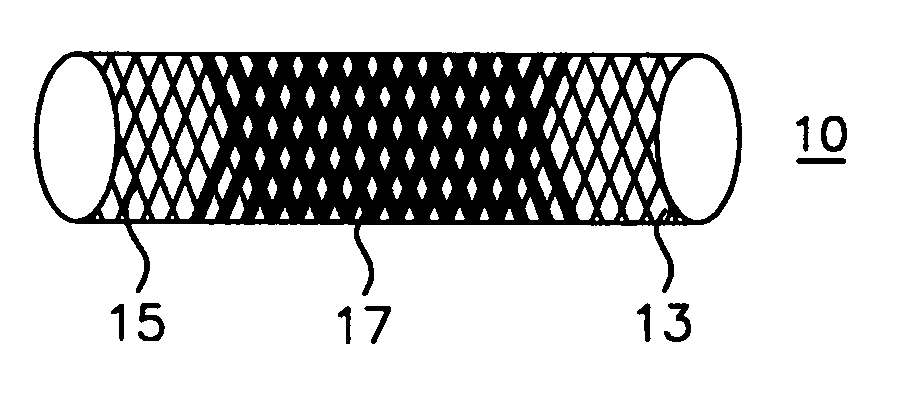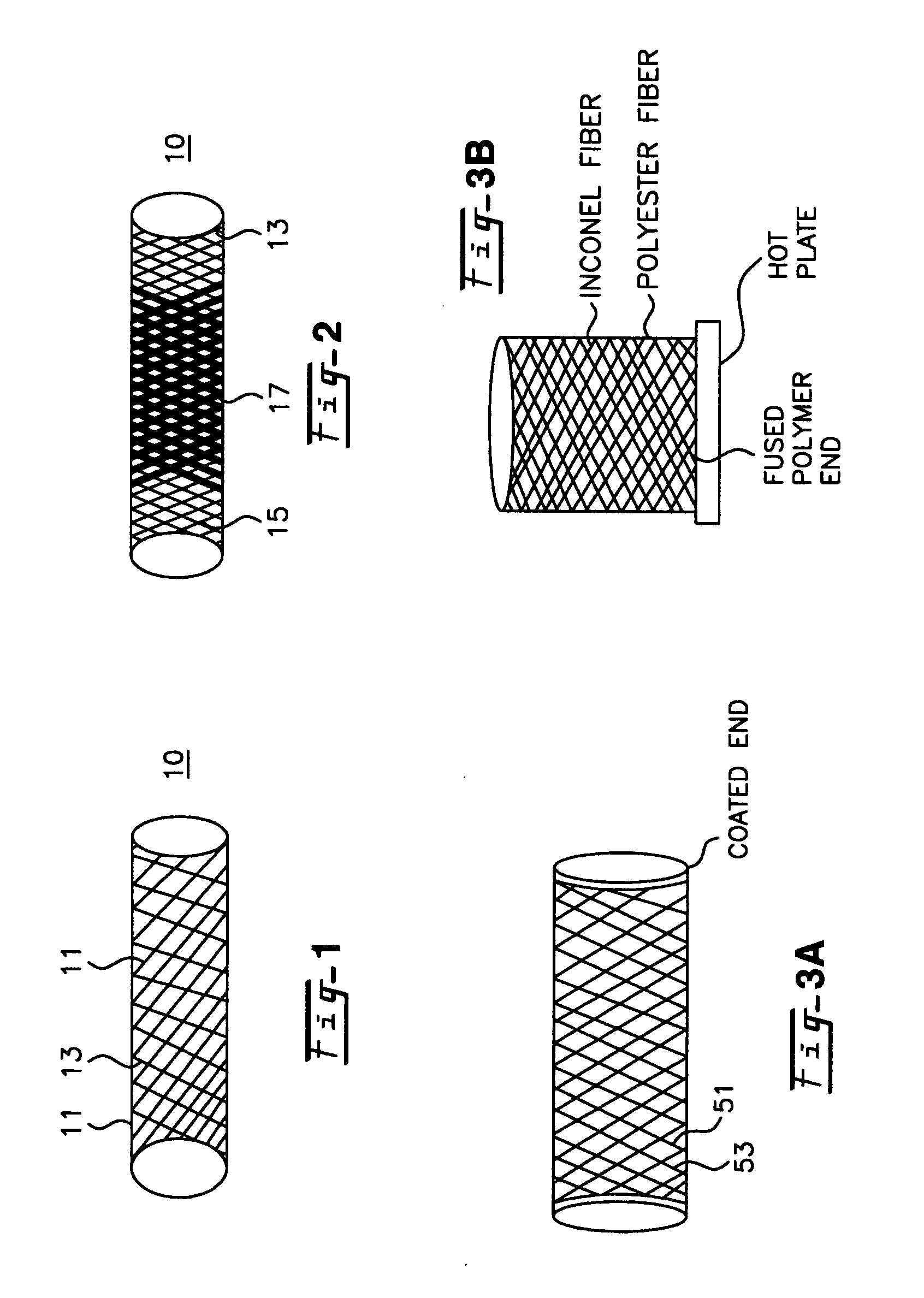Blood flow diverters for the treatment of intracranial aneurysms
a technology of intracranial aneurysms and blood flow, applied in the field of medical devices, can solve the problems of increased aneurysm pressure, rupture of aneurysm, and inability to expect, and achieve the effect of reducing its porosity
- Summary
- Abstract
- Description
- Claims
- Application Information
AI Technical Summary
Benefits of technology
Problems solved by technology
Method used
Image
Examples
Embodiment Construction
[0023] One preferred polymeric device useful as part of the present invention is produced by a sequence of steps involving the braiding of (mono-or multi-) filaments of heat-settable polymers either alone or co-braided with non heat-settable filaments of either metal or nonmetal. It is also contemplated to coat the tubular structure either partially or fully to mitigate fraying of the ends and to improve anchorage or radio opaqueness. The ends may be fused by trimming and / or heat treatment also to prevent fraying.
[0024] What is essential is that the present invention is sized to be positioned on the outside of the aneurysm rather than the prior art procedure of placing a structure inside the aneurysm. The blood flow diverter of this invention keeps blood out of the aneurysm by protecting the aneurysm from the outside. The blood flow diverter of this invention is placed over the outside of the aneurysm by a medical procedure such as by the use of a catheter and guided by a radio opa...
PUM
| Property | Measurement | Unit |
|---|---|---|
| Flow rate | aaaaa | aaaaa |
| Flexibility | aaaaa | aaaaa |
| Hydrophilicity | aaaaa | aaaaa |
Abstract
Description
Claims
Application Information
 Login to View More
Login to View More - R&D
- Intellectual Property
- Life Sciences
- Materials
- Tech Scout
- Unparalleled Data Quality
- Higher Quality Content
- 60% Fewer Hallucinations
Browse by: Latest US Patents, China's latest patents, Technical Efficacy Thesaurus, Application Domain, Technology Topic, Popular Technical Reports.
© 2025 PatSnap. All rights reserved.Legal|Privacy policy|Modern Slavery Act Transparency Statement|Sitemap|About US| Contact US: help@patsnap.com



